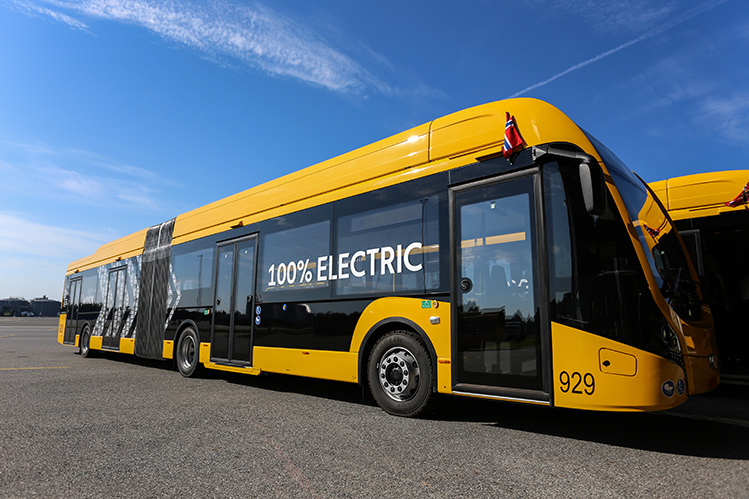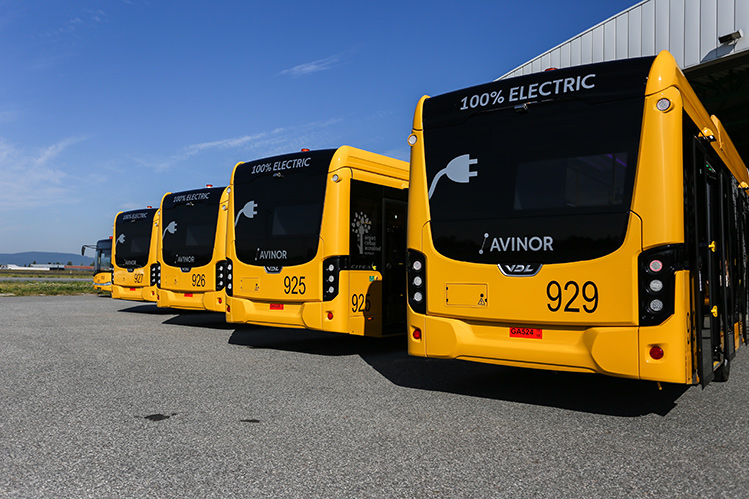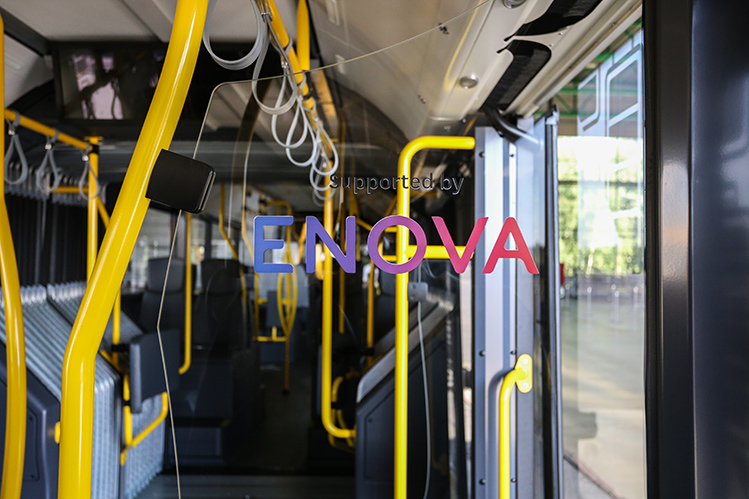Avinor Oslo Airport has become the first airport in the Nordic region to use electric buses to carry passengers between gates and aircraft. “This is a very important step to reduce the airport’s emissions of greenhouse gases and to reach our goal of becoming a fossil-free airport by 2030,” says Stine Ramstad Westby, Airport Director.
In June 2018, Avinor Oslo Airport was granted 16 MNOK (€1.5m) in ENOVA support to procure eight electric shuttle buses. The eight buses have now been taken into use, with the electric buses driven in a convoy from Helsfyr Station (located around 45km away) to Oslo Airport. The event continued with the official handing over of keys and speeches from Avinor, suppliers and partners.

Avinor Oslo Airport has become the first in the Nordics to use electric buses to carry passengers between gates and aircraft. The eight buses put into operation are the first step. By 2026, the goal is that all buses that carry passengers between planes and gates are electric.
Proud to be the very first
The eight buses put into operation are the first step. By 2026, the goal is that all buses that carry passengers between planes and gates are electric. In a normal year, 1.2 million passengers are transported by bus between the gates and planes at Oslo Airport.
“It is very nice to present some positive news in these corona times,” says Westby. “I am proud that we are the first airport in the Nordic region to have electric buses that will carry passengers between the gates and planes. The buses are put into operation immediately.”

Stine Ramstad Westby, Airport Director, Avinor Oslo Airport: “It is very nice to present some positive news in these corona times. I am proud that we are the first airport in the Nordic region to have electric buses that will carry passengers between the gates and planes. The buses are put into operation immediately.”
Future-oriented choices and satisfied suppliers
The Dutch company VDL Bus & Coach has delivered the buses, and charging infrastructure has been provided by the Dutch company Heliox. The new buses have a future-oriented design and are 18 metres long.
“Avinor has chosen the BRT model (Bus Rapid Transit),” explains Frank Reichel, CEO of VDL Bus & Coach Norway AS. “However, Avinor is interested in more than just the design. Choosing our electric buses says a lot about the ambitions of the airport. It is seamlessly linked to the overall picture of Norway as a front runner in electric travel in Europe.”
Westby thanked both the supplier companies and ENOVA for good cooperation. She pointed out that the support from ENOVA made it possible to implement environmentally-friendly buses at a faster pace. “Even though electric buses are more expensive than fossil driven buses, this is the right choice for the future,” she adds. “As more buses are put into production, we expect that it will be cheaper with an electric bus than with diesel.”

In June 2018, Avinor Oslo Airport was granted 16 MNOK (€1.5m) in ENOVA support to procure eight electric shuttle buses.
“Important that companies like Avinor lead the way”
The environmental organization ZERO also participated in the event and stressed how important it is that companies like Avinor lead the way with implementing environmentally-friendly efforts.
“By going from diesel buses to zero-emission buses, Avinor shows how to contribute to solving the climate challenges,” says Marius Gjerset, Technology Manager in ZERO. “We are happy that such a large player as Avinor is leading the way and congratulate everyone involved.”







